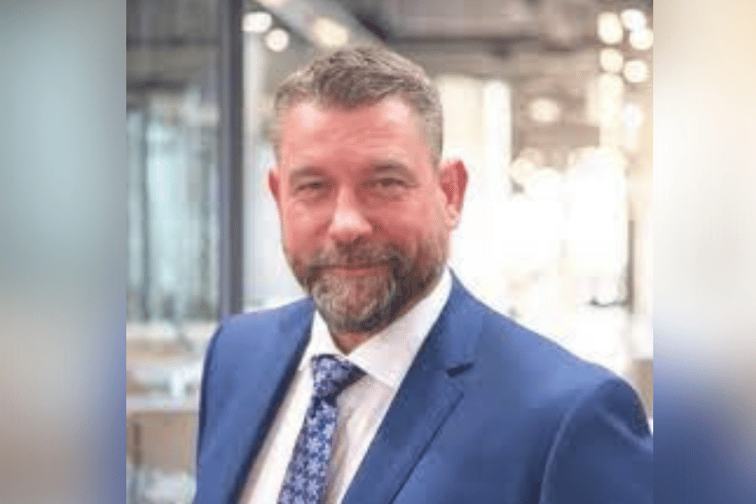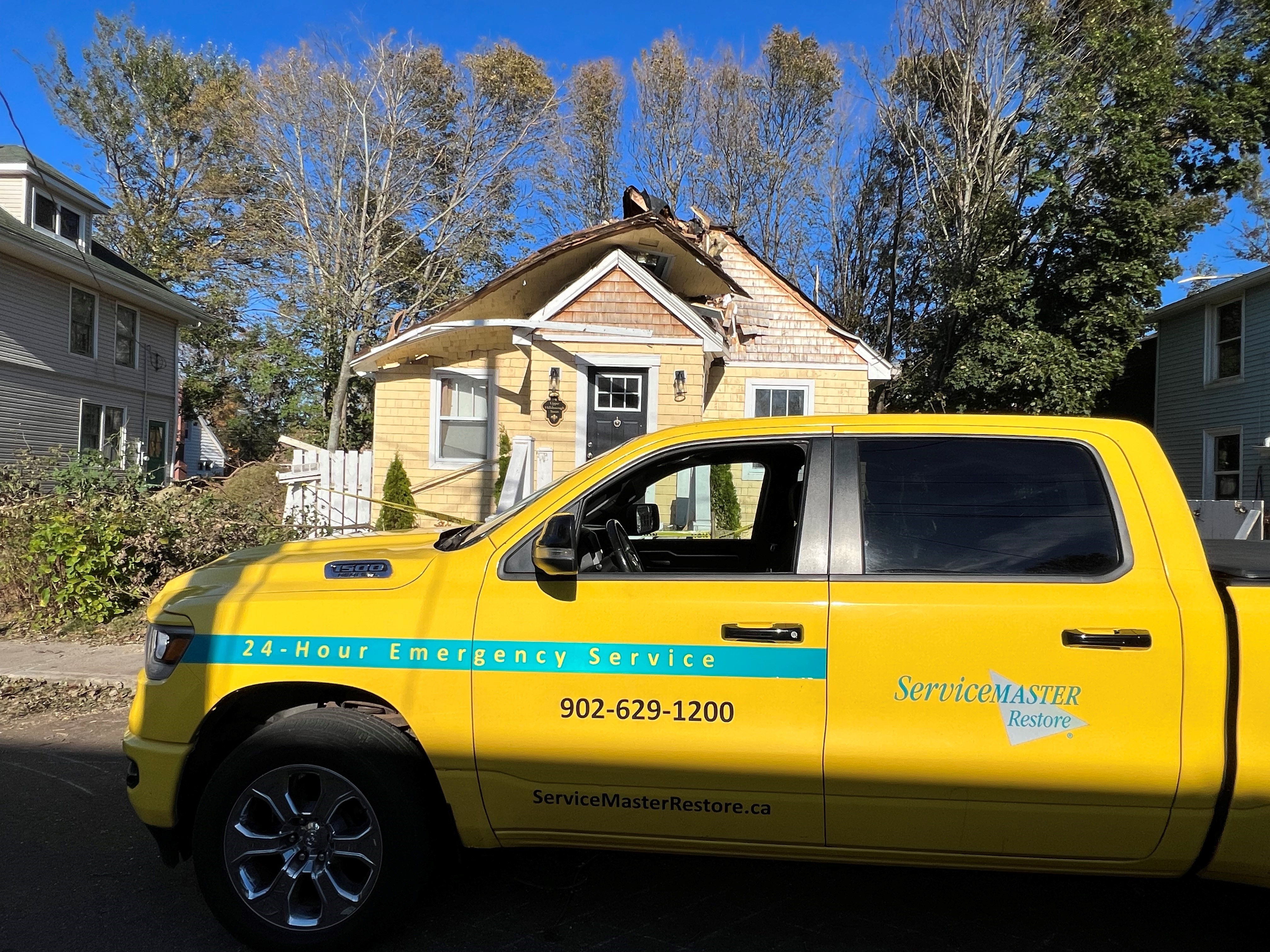

This article was produced in partnership with ServiceMaster Restore Canada.
Desmond Devoy, of Insurance Business Canada, sat down with Daniel Loosemore, chief of sales and operations, ServiceMaster Restore Canada, as he looked back on his time in the immediate aftermath of Hurricane Fiona, on the front lines of the devastation on Prince Edward Island, and how his company, from all over the country, rallied to help the Maritimes rebuild.
As Hurricane Fiona gathered steam in the ocean, headed north for Atlantic Canada, ServiceMaster Restore teams were already being mobilized, headed east.
For Daniel Loosemore (pictured), chief of sales and operations, ServiceMaster Restore Canada, back in September 2022, “it seemed quite clear that it was going to make landfall,” he said. “We were able to put some measures in place,” through a planning protocol, where the company reached out to network members across the country “to gauge capacity…and get mobilized once landfall was confirmed, or even prior to,” he recalled.
As a company that responds to severe weather impact, it is standard practice to keep an eye on the weather to try to be ahead of the curve of natural disasters that may strike, from forest fires to storms to flooding. Even so, “we didn’t know exactly where or exactly how severe,” the hurricane would be.

But they did know that it would be a water and wind event – with winds being the dominant of the two.
“Typically, what will happen in the event like that, the local offices get overwhelmed quite quickly because that’s their home service territory. So they have insurer partners and independent adjusting partners and brokers that will rely on them.”
The first contingents from outside of the region were from Ontario, with sub traders, like carpenters, roofers, along with the crews and technicians joining in.
“The more pressure we can relieve from the local offices through mobilization, the better it is for us to be able to manage the demands of the event,” he said. “We got on the road, not really knowing where we were going to end up.”
By the time the mobilized forces reached Moncton, the company knew where to end them based on the most severely impacted areas of the hurricane.
Once the storm hit, “were able to then geomap the impacted areas and then divert the crews accordingly to service those needs.” As the level of devastation became apparent, partners from Alberta and British Columbia also joined in.
The first level of care was helping with immediate needs – removing a tree that had crashed on to a roof and then fixing the roof, to prevent rain from further damaging the inside of the house.
The business has a 24/7 response protocol that gets heightened in catastrophic events.
“We were able to intake claims centrally and administer them based on postal code and the corresponding mobilized office,” he said. “This practice ensures we have capacity oversight to manage the response time to the policy holders in need.”
The industry is well aware of the hurricane season, of the big August and September storms that can wreak havoc on the eastern coasts of Canada and the US, which is something that his company prepares for with its insurance partners.
“We have regular joint calls at times with our US operations,” he said. “It really is a communication plan and execution of a pre-existing action item.”
Regular text chats with vendor managers at insurance companies and regular status calls throughout each day became the norm.
Team members were monitoring the situation from Vancouver and Halifax, as well as company headquarters in Oakville, Ont., west of Toronto. A few days after the storm hit, he flew to Charlottetown, Prince Edward Island.
“We hunkered down, set up a war room environment, where we would pipe in our customers,” in the conference room of a hotel, he remembered. “So, we have that as kind of a safe harbour.” It was also a place where responding crews could refresh, get something to eat, between calls.
As the clean-up continued, claims were starting to come in, and crews were being dispatched in as efficient a way as possible, so that “nobody’s taking on too much and being overwhelmed,” he said. As a crew reaches capacity, they are inactivated, and then reactivated when they are able to take on new tasks.
Prince Edward Island “was where the epicentre of the damage was. The devastation was truly heartbreaking.” Power was out in many parts of the island, roadways blocked, cell towers were down, limiting the ability of many to file claims.
“They can’t travel,” he said. “They can’t communicate. There’s no power. It’s quite a scary environment.”
He saw large trees uprooted, trees that had crashed into homes, damage to roofs, and some of the island’s sand dunes swept out into the water, which could lead to further erosion in future.
“It impacted the natural world, our infrastructure, as well as the community and the citizens that now have to recover,” he said.
It also made making tough choices, like making repairs to a home so that it would not suffer further damage, a stop-gap measure until more fulsome repairs could be done in the spring of 2023.
After the storm, “our locations mobilized and did the urgent work.” But there are not enough skilled trades people in Atlantic Canada to cover all of the damage in a short period of time.
“There’s not enough tradespeople to do roof replacement,” he said. “What are they going to do?”
Supply chain disruptions were also impacting repairs.
“It was sobering,” he said of his time on the island. “Very emotionally difficult,” looking at islanders “in dire need and our crews working around the clock and literally sleeping in their vehicles, to be present for the community.” He saw elderly couples whose homes had been damaged and “shattered.” For him and many others, home is “a safe haven. When that gets violated, it can be quite upsetting.”
As with any major event, even with the best of planning and execution, there were still lessons to be learned, which were gone over during a post-event debrief session.
“We really went through what worked, what didn’t work, how it was funded, because there is a lot of outlay of capital to mobilize and get staff there,” he said. Best practises were identified, as was a need for geo mapping and consistent standard operating procedures related to estimating losses.
“The more consistent we can get, the more our output becomes expected from our partners,” he said. “We’re going to continue to develop and serve our carrier partners in this area.”
Canada has seen quite a few noteworthy environmental incidents over the years, from Calgary’s 2013 floods to the fire that devastated Fort McMurray in 2016, to the severe wind storms that impacted Ottawa last May.
“These events are becoming more frequent and more severe,” he said. “As the severity factors ratchet up, the need for the response will ratchet up in the same or greater scale.” Already a leader in catastrophe response, ServiceMaster Restore is doubling down on developing out its capabilities to respond to a greater scale.
The company has taken steps to affirm its belief in climate change, as it sees the results of it first-hand every day. To that end they have issued a climate change commitment in alignment with the Net Zero Carbon Footprint ambitions of some of their major insurer partners.
For more, please visit: https://www.servicemasterrestore.ca.
ServiceMaster Restore is the leading franchise provider of needs-based residential commercial services. ServiceMaster has been a leader in needs-based services for nearly a century. Its nine brands serve more than one million homes and businesses each year in restorations, cleaning, moving, bioremediation and property inspection industries.
